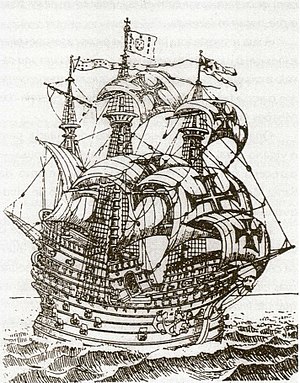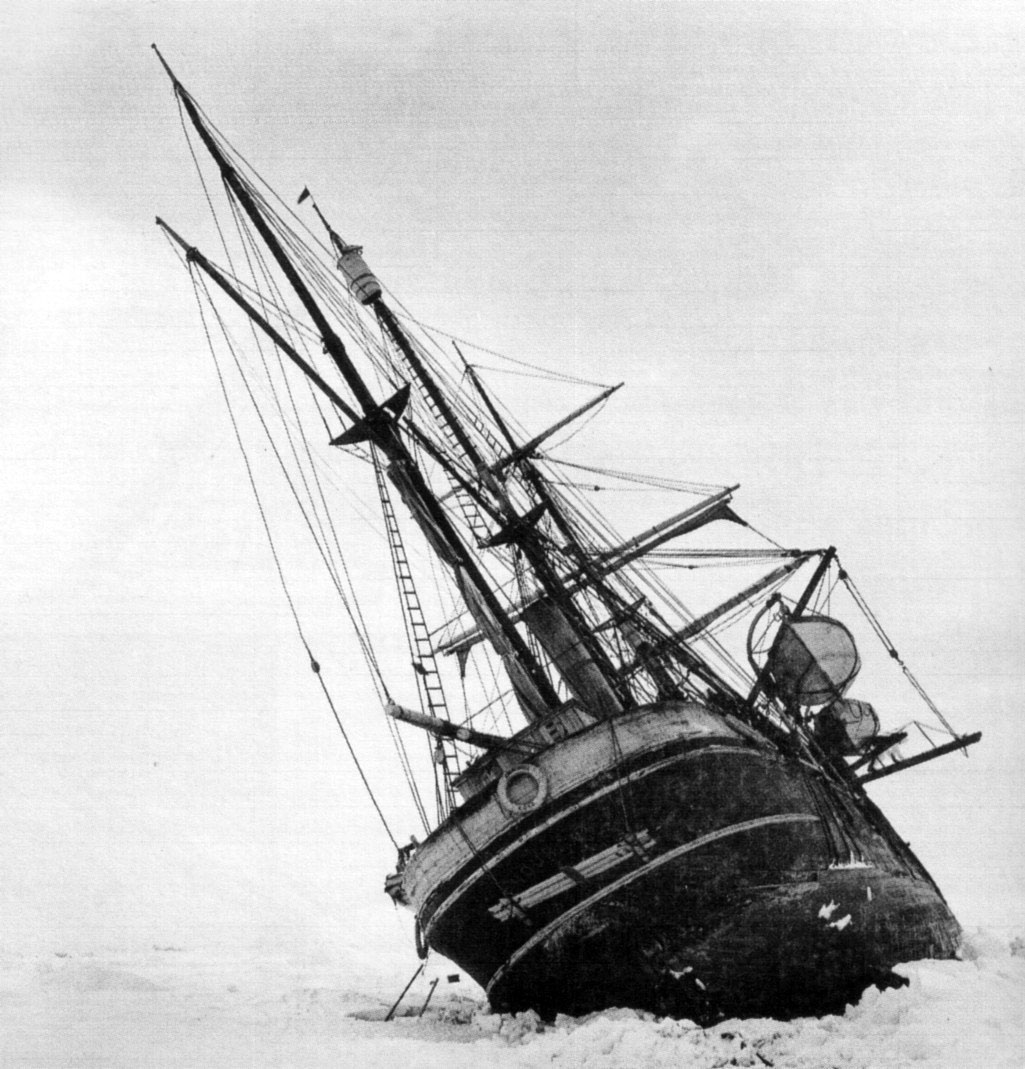8 Legendary Shipwrecks Still Waiting to Be Discovered
/When the remains of the RMS Titanic were discovered in 1985, it marked a milestone in underwater archaeology that ended years of the famous hunt for the sunken ship.
However, in the history of seafaring and oceanic travels, there are hundreds if not thousands of ships that have been lost or claimed by the sometimes treacherous waters of the ocean. From the expeditions of Christopher Columbus and Ferdinand Magellan to the ships that sailed to defend freedom during World War II, these giant vessels may have been built to outlast long journeys or heavy bombardment. Yet, as many of them have been witness to, none of them have ever won a fight against crashing waves and, well, sinking.
While we do mark the Titanic as one of history’s greatest underwater finds since its sinking, in today’s list, we are counting down to other notable ships that have also gone the way of the Titanic. Whether by bad luck or by enemy fire, here are 8 Legendary Shipwrecks that are still waiting to be discovered!
#8 — The Flor De la Mar
Translated as “Flower of the Sea,” this 400-ton Portuguese carrack was built in 1502. It was one of the ships that were instrumental in aiding Portugal to capture the island of Malacca in the Battle of Diu.
What makes the Flor De la Mar one of the most sought-after shipwrecks in history is its rumored cargo of precious gems and gold, rare artifacts, metals, and much more treasure than a normal ship could carry. The treasure was intended for Queen Dona Maria and King Manuel I of Portugal.
The story was that after the successful invasion and capture of Malacca, the ship’s crew loaded the Flor with whatever precious treasure they can get their hands on and fit on the ship as gifts to the King and Queen.
In 1511, on its way back to Lisbon from Malacca, a violent storm smashed into the Flor head on and shipwrecked it somewhere off the coast of Sumatra. The storm was said to have been so strong that the ship was split in two, spilling its priceless cargo into the sea before it completely sank. To this very day, the exact whereabouts of the Flor de la Mar remains a mystery. Even renowned American diver, Robert Marx, reportedly shelled out millions of dollars to find the Flor and its sunken treasure calling it, “The Richest Vessel ever Lost at Sea!”
#7 — Las Cinque Chagas
Sailing from Goa, India to Lisbon, Portugal with a cargo of 3.5 million Portuguese Cruzados and 22 chests filled with diamonds, rubies, and pearls (worth over $1 billion in today’s standards) the 1,200-ton Las Cinque Chagas sank into the sea while it was nearing its final stretch home.
Measuring about 150 feet long and 45 feet wide, the Chagas, along with its rich cargo, carried with it more than 1,000 people, 400 of whom were reported to be slaves. The long voyage of the ship was almost completed, according to accounts, when, near the coastlines of Portugal, the Chagas was intercepted and attacked by three British privateer ships: The Mayflower, The Royal Exchange, and The Sampson. These privateer ships were captained by pirate entrepreneurs who modified and old warships or merchant ships to suit their needs.
The skirmish that followed their meeting lasted two days of nonstop bombardment from both sides. Unfortunately for the Chagas, despite its monolithic size, the battle fell in favor of the privateers. The Chagas caught fire after trying to defend itself, and on July 13, 1594, it sank off the coast of Portugal’s Azores, never making it to safety.
Just like the Flor de la Mar, the Chagas is sought-after by divers and modern-day treasure hunters for its promising haul. However, expert salvage operators believe that the remains of the ship, as well as its treasure, could be in waters as deep as 2500 feet.
#6 — Shackleton’s Endurance
Ernest Shackleton was an Irish-born explorer who hoped to successfully make an overland crossing of Antarctica, making it his first Imperial Trans-Antarctic Expedition to the South Pole.
However, the expedition met an abrupt end when his ship, the Endurance, was trapped in the Weddell Sea because of heavily packed ice, preventing the ship from even making it to the continent.
Like a defiant behemoth, the Endurance managed to survive 10 whole months in the ice before heavy amounts of pressure pressing down on its hull finally cracked it and sent the ship tumbling down the ice and into the cold waters below.
Shackleton and his crew managed to survive and made a perilous, yet almost legendary, 800-mile voyage back to England in a lifeboat.
Today, the Endurance remains lost deep in icy waters. Experts believe that the ship is now sitting at a depth of 10,000 feet, but before anyone could get to it, there is still the matter of breaking through a 5-foot layer of solid ice. One salvage expert named David Mearns and the man who discovered the Titanic, Robert Ballard, have expressed their interest in diving for the remains of the Endurance. Unfortunately, though, a team is yet to be assembled as well as raising enough money to fund the expedition.
#5 — SS Baychimo
Like a page out of a ghost story, the fate of the SS Baychimo is of particular interest. Constructed in Sweden in 1914 and owned by a German shipping company until the beginning of the First World War, the SS Baychimo is a 1322 ton steam-powered sea vessel.
After it was purchased by The Hudson’s Bay Company, the Baychimo went full-steam ahead as it made voyages across the North Atlantic from Scotland. It also made frequent visits in and around the areas of Alaska and British Columbia.
Unfortunately, the gigantic Baychimo went on its last voyage in 1931. While on its way to Vancouver, it fought against the harsh waters of the North Pacific, battling the wind and giant waves that knocked it from side to side. Fearing for their lives, the crew of the Baychimo chose to abandon ship and evacuated on lifeboats.
According to stories and legends surrounding the ship, the Baychimo did not exactly sink, and there were no eyewitnesses to confirm that the North Pacific devoured it. Thus, over 38 years since its mysterious disappearance, alleged sightings of the ship were reported by various captains, fishers, and Inuits; many of whom say that the ship was plodding along fine even without a crew. Other stories also include sailors failing in their attempts to board the ship. Later on, the sightings stopped and, after more than 20 years without even a whisper of the Baychimo, people have concluded that the abandoned ship had finally sunk. The last known sighting was in 1969 and efforts are being revived to find the so-called ghost ship as of 2006.
#4 — USS Indianapolis
After successfully delivering components of the first atomic bomb to an American base in Tinian on July 30, 1945, the USS Indianapolis met its demise a few days later after being torn apart by torpedoes from a patrolling Japanese submarine called I-58.
The cruiser seemingly disappeared instantaneously after the attack. It plummeted in the waters of the Philippine Sea, taking with it about 300 of its crew.
The survivors, some 900 of them, were left helpless in the shark infested waters of the region and by the time they were spotted and rescued by a Navy plane days after the attack, only 317 of them were left after the rest died from exposure and attacks from prowling sharks.
It was called the worst American Naval Disaster of World War II, and despite efforts to salvage what’s left of the Indianapolis, the wreckage cannot yet be found by sonar or underwater vehicles. The problem is that the cruiser may be resting in a depth of over 12,000 underwater.
#3 — Bonhomme Richard
Donated by France to the Patriot Cause, the Bonhomme Richard was one of the few Continental Navy ships that had a distinguished and remarkable combat record in the late 18th Century.
Captained by John Paul Jones, the Bonhomme was able to capture 16 British vessels in a matter of weeks when it was first acquired.
However, it was on September 23rd when the Bonhomme and its captain bit off a little more than they could chew. Locked in a battle with the HMS Serapis and another ship from the Royal Navy, Jones brushed off calls to surrender and relentlessly bombarded the two Royal Navy ships with as much firepower as the Bonhomme can. Several hours later, Jones was able to capture the Serapis, but unfortunately for the Bonhomme, the ship sustained a considerable amount of damage in the skirmish and suffered several shots below its waterline. Unable to keep the now burning ship afloat, the captain and his crew had no choice but to abandon ship and let it sink in the merciless waters of the North Sea.
Centuries later, salvage expeditions were launched to find the wreckage of the Bonhomme. A few salvage teams have identified wrecks matching the Bonhomme’s description, but none of these discovered wrecks are yet to be confirmed as the fabled ship itself.
#2 — HMS Endeavour
It is a ship that is as famous as the captain who commanded it. The HMS Endeavour was the first European vessel in history to sail to the east coast of Australia and circumnavigate New Zealand successfully under the captainship of James Cook.
Sadly for the Endeavour, it was sold years later to a private buyer and was tragically renamed The Lord Sandwich. Later on, the British Royal Navy chartered the ship to ferry troops to New England at the height of the American Revolution. One night, while it was moored in Rhode Island’s Newport Harbor in 1778, it was intentionally sunk along with 13 other sea vessels as part of a blockade against an incoming French fleet.
Today, the Endeavour is one of the many ships that are part of ongoing research by the Rhode Island Marine Archaeology Project and the Australian National Maritime Museum. Taking several years to map and explore the silt-heavy waters of Newport, the combined team has discovered the remains of the sunken ships but, sadly, the Endeavour remains to be elusive even after its demise.
#1 — The Santa Maria
No ship is more legendary than those that sailed with Christopher Columbus into the New World. Sailing from Spain, Columbus took with him three ships: the Niña, the Pinta, and the Santa Maria. The three successfully arrived in the Americas, but during the journey back, only two were able to return to Spain.
The story goes that on Christmas Eve 1492, the sailor that was charged to steer the Santa Maria ordered an inexperienced cabin boy to do the job for him. Almost immediately, the cabin boy ran onto a coral reef in what is now modern-day Haiti and gave the ship some serious damage.
Fortunately for the crew, they were able to empty the ship of its cargo with the help of the natives. However, the ship sank into the sea the next day and, over the years, may have been buried deep in sediment.
In 2014, underwater explorer, Barry Clifford made the news when he claimed that he had found the wreckage of the Santa Maria with the help of Columbus’ journals. It may have cause to celebrate, but after a closer examination of the alleged wreckage by UNESCO, it was found out that the remains discovered belonged to a ship from the 17th or 18th centuries. To this very day, the precise location of the flagship Santa Maria remains lost to history.
Sources:
http://www.history.com/news/history-lists/6-famous-shipwrecks-still-waiting-to-be-discovered
https://www.thevintagenews.com/2016/06/29/top-six-ships-searched-today/
http://www.thedailybeast.com/the-greatest-shipwrecks-still-out-there
http://asiasociety.org/blog/asia/lost-sea-four-famous-shipwrecks-waiting-be-discovered


















